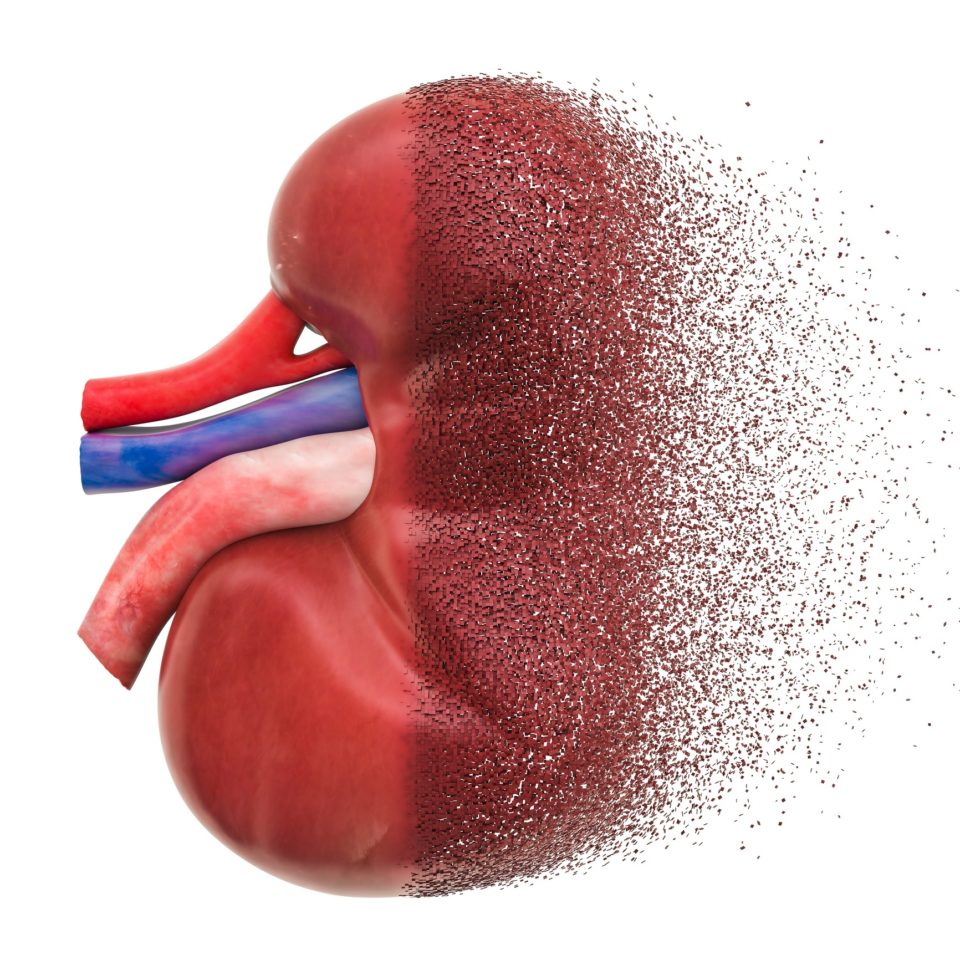
The most common primary glomerulonephritis is immunoglobin A (IgA) nephropathy (IgAN), a leading cause of kidney failure. Among patients with IgAN, approximately 10% to 60% progress to kidney failure within 10 to 20 years. IgAN is heterogeneous and carries a highly variable risk for disease progress, making prediction of prognosis in individual patients a challenge in clinical practice.
Currently, the risk for disease progression in patients with IgAN relies on clinical data including proteinuria, blood pressure, and estimated glomerular filtration rate (eGFR at biopsy, or a histologic score (MEST-C) based on mesangial hypercellularity, the presence of endocapillary proliferation, segmental glomerulosclerosis/adhesion, and severity of tubular atrophy/interstitial fibrosis. Results of a previous study suggested that a combination of clinical data with histologic score improved risk stratification in IgAN; integrating the most validated risk factors may be the best strategy for a clinically relevant method of stratifying risk in this patient population.
Efforts to develop biomarkers for early prediction of disease progression in IgAN produced several biomarkers in serum (such as galactose-deficient IgA1 [Gd-IgA1], autoantibodies against Gd-IgA1, fibroblast growth factor 23 [FGF-23), and matrix metalloproteinase 7 [MMP-7]) and urine (such as angiotensinogen [AGT], epidermal growth factor [EGF], and kidney injury molecule 1 [KIM-1]). Most of the testing of these biomarkers has been conducted in studies with relatively small sample size; results to date have shown only modest improvement in prediction.
MMP-7 expression is not usually detected in the normal adult kidney; however, levels are markedly induced in the presence of IgAN. Urinary MMP-7 levels reflect renal Wnt/ b-catenin signaling, which is activated in IgAN. Xiaobing Yang, MD, and colleagues conducted a prospective multicenter 2-stage cohort study in China to test the hypothesis that urinary MMP-7 level may be useful as a noninvasive biomarker for early prediction of IgAN progression. Results of the study were reported in the American Journal of Kidney Diseases [2020;75(3):384-393].
The outcome of interest was IgAN progression, defined as a composite of either a permanent reduction ≥40% in eGFR (confirmed by a second measurement at least 30 days later) over baseline, kidney failure (eGFR to <15 mL/min/1.73 m2 or the need for renal replacement therapy), or death, whichever occurred first.
The study enrolled a total of 946 patients. Of those, 554 patients participated in a training cohort to create a reference Cox proportional hazard model for IgAN progression. The remaining 392 patients were enrolled in a validation cohort to externally validate the prediction models that incorporated urinary MMP-7 derived from the training set. The training cohort was used as the comparator of the performance of urinary MMP-7 level with those of the other seven biomarkers (urinary AGT, EGF, KIM-1; serum Gd-IgA1, MMP-7, KIM-1, and FGF-23) as predictors of the risk for progression of IgAN.
Median follow-up was 40 months in the training set and 28 months in the validation set. Sixty-one patients (event rate, 3.3% per year) in the training set reached the composite end point of 40% decline in eGFR (n=35) or kidney failure (n=26). In the validation set, 37 patients reached the composite renal outcome (event rate, 4.1% per year): 25 experienced a 40% decline in eGFR and 12 had kidney failure. There were no participant deaths in either cohort.
Prior to biopsy, <20% of patients in the training set were treated with renin-angiotensin system (RAS) inhibitors and <10% received immunosuppression agents. There was no significant difference in drug use between those with and those without disease progression. Following biopsy, most patients in both cohorts received RAS inhibitors regardless of progression status. Use of immunosuppression agents was more common in patients with disease progression than in patients without disease progression.
In univariable models, there were significant associations with IgAN progression with levels of each of the eight biomarkers (P<.05 for all). However, following adjustment for clinical variables and MEST-C score, the associations with serum levels of FGF-23, KIM-1, and MMP-7 were no longer significant.
Of the eight biomarkers, the association with IgAN progression was strongest with urinary MMP-7 level. In the adjusted model, patients in the highest tertile of urinary MMP-7 (>3.9 mg/g) at biopsy had a 2.7-fold higher risk of IgAN progression compared with patients in the lower two tertiles combined.
When assessed as a continuous variable in a multivariable model, there was an association between higher urinary MMP-7 and a higher risk of IgAN progression (hazard ratio per 1-standard deviation greater, 3.2; 95% confidence interval [CI], 19-5.6; P<.001).
Urinary MMP-7 was a much stronger predictor of IgAN progression in patients with a relatively early stage (eGFR ≥60 mL/min/1.73 m2) of the disease (P for interaction=.02). In a subgroup with eGFR ≥60 mL/min/1.73 m2 at biopsy, there was an association between having urinary MMP-7 levels >3.9 mg/g and a 3.4-fold higher risk for progression compared with those for whom this biomarker was below this threshold. In patients with baseline eGFR <60 mL/min/1.73 m2, those with urinary MMP-7 levels >3.9 mg/g has 2.3-fold increased risk compared with those for whom the biomarker was below this threshold.
In the training set, urinary MMP-7 level outperformed the other seven biomarkers in progression risk in IgAN, producing a C statistic of 0.85 (95% CI, 0.72-0.83) in the multivariable Cox model. Baseline MMP-7 level predicted the 3-year risk for the composite renal outcome, with a C-statistic of 0.82 (95% CI, 0.75-0.89).
The addition of urinary MMP-7 level to the model using clinical data at biopsy and MEST-C score resulted in a significant improvement in the risk prediction of IgAN progression (C-statistic, 0.85; 95% CI, 0.81-0.89) compared with the reference model.
The researchers cited the lack of validation in other ethnic populations as a limitation to the study findings.
“In conclusion, we have identified urinary MMP-7 level as an independent and strong predictor for the progression of IgAN,” the researchers said. “The addition of urinary MMP-7 level to the clinical data at time of biopsy and MEST-C score significantly improved the 3-year risk prediction of the composite renal outcome and risk reclassification of disease progression in IgAN.”
Takeaway Points
- Early and accurate prediction of disease progression in patients with immunoglobulin A nephropathy (IgAN) is a clinical challenge.
- Researchers in China conducted a prospective observational cohort study to test the hypothesis that the addition of urinary matrix metalloproteinase 7 (MMP-7) level to clinical data at time of biopsy would be a promising predictor of IgAN progression.
- In this cohort, urinary MMP-7 was an independent predictor of progression of IgAN; risk prediction was significantly improved with the addition of MMP-7 level to the current







 © 2025 Mashup Media, LLC, a Formedics Property. All Rights Reserved.
© 2025 Mashup Media, LLC, a Formedics Property. All Rights Reserved.